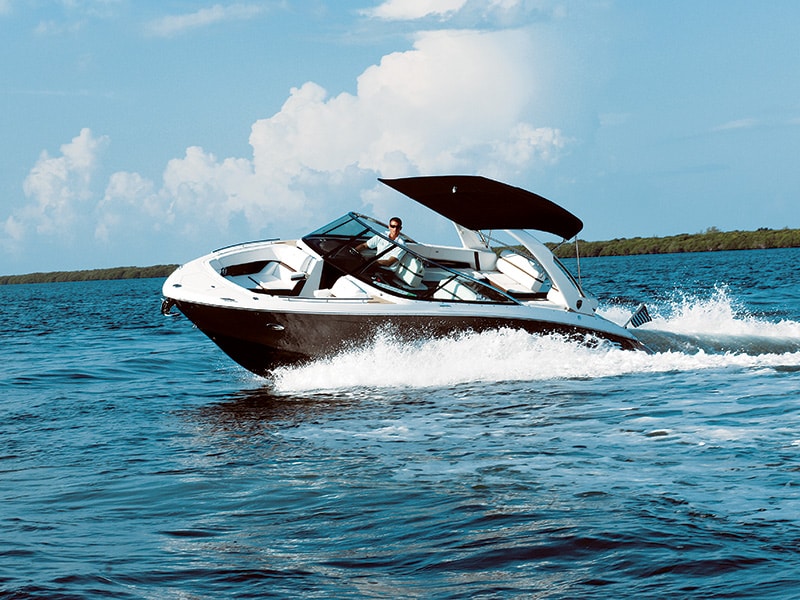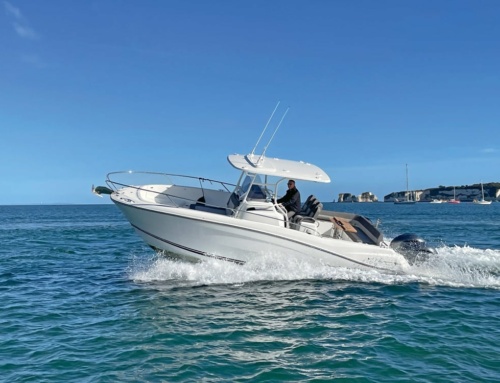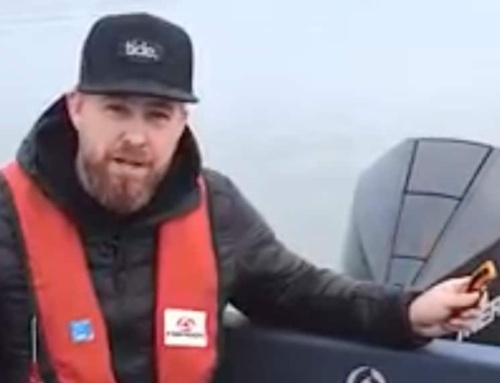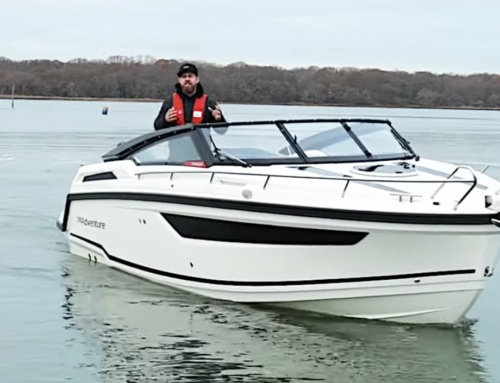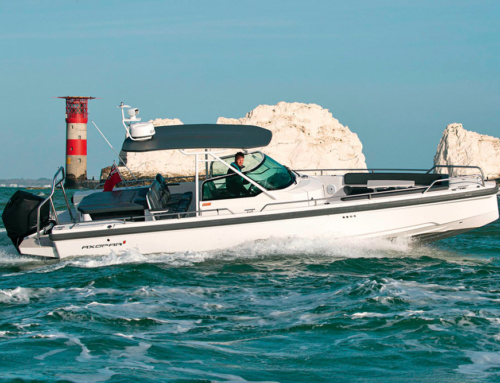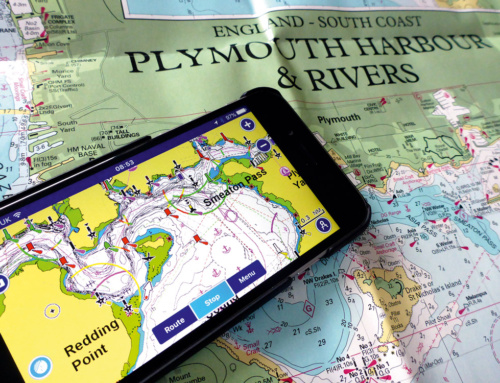- Newer boats may be fitted with auto-levelling systems that adjust trim to set your boat up without your input.
- How we can adjust trim will depend on the set-up of the boat.
Paul Glatzel explains the meaning and importance of trimming your boat …
One of the subjects instructors get asked about most is trim. It’s one of the most misunderstood and potentially confusing areas for many boaters, so let’s clear a few things up and bust some myths as we do.
If we are going to look at trim, we need to agree on what we mean by it. Trim is the mechanism of adjusting the way your boat rides through the water. We will want to trim a boat for a number of reasons:
- To balance the boat better – perhaps it’s leaning to one side
- To adjust the ‘angle of attack’ to waves
- To make the boat run more efficiently and so improve performance
How we can adjust trim will depend on the set-up of the boat.
Trim tabs: These metal plates are pushed up and down using a hydraulic ram. There is one on each side of the boat. A good rule of thumb is that if you have tabs and the ability to trim the legs/outboards, then use tabs for lateral (side to side) trim and the legs for ‘fore/aft’ trim. Some boats benefit from tabs down to get onto the plane, and in windy conditions ‘tabbing down’ in a marina can give you better grip at slow speeds. Tabs can only really be used to lower the bow, as when they are lifted beyond level with the hull they don’t have the effect of lifting the bow.
Some trim systems have a plate that slides down into the water flow, which has the same effect as trim tabs. These are electrically operated and don’t use hydraulic rams/fluid, which suits some boats.
Outboards or outdrive legs are easy to raise and lower, and change the fore/aft trim of a boat. Twin-engine installations can be independently trimmed, but it tends to be better to keep the trim the same on both engines. Outboards/outdrives have an advantage over trim tabs in that by lifting them higher, this has the effect of lifting the bow.
Generally, when we are pushing through the water slowly we will prepare the boat to ‘get onto the plane’ by trimming the outboard fully down. On many motor cruisers with outdrive legs, there will be a gauge showing from -6 trim through 0 to +6. I would tend to keep the trim on 0 and then adjust it down if needed. Once on the plane, trim can be adjusted up slightly to reduce the amount of hull in contact with the water and so increase efficiency. Go too far up, though, and you unsettle the boat.
Another key reason for adjusting trim is related to weather conditions. When heading into the wind, trimming the bow down helps the boat to slice through the waves, while when heading downwind, raising the bow is best.
If you are on the plane, then as mentioned, you may be ‘trimmed up’ to improve efficiency. Before you go into a turn you will want to ‘trim down’ to help the bow track through the turn. Boats vary, though, and with some boats trimming fully down before the turn may not be the best move, so build up your knowledge of how your boat handles slowly so you don’t get caught out.
Newer boats may be fitted with auto-leveling systems that adjust the trim to set the boat up without your input.
Myth-busting! Let’s imagine a situation where you are heading at about 45° to the wind so the wind is on your starboard bow. You are steering to maintain your heading across the bay to reach a particular mooring spot. So the question is, which way will your boat lean – towards the wind (leaning to starboard) or away from the wind (leaning to port)? If you have to draw this out to get your mind round the question, no problem. About 95% of you will quite logically have answered that the boat will lean away from the wind, feeling the wind will push the top of the boat to port. Wrong – the boat will almost certainly lean towards the wind. But why? If you think of previous articles, we’ve established that a powerboat is only ‘happy’ when it’s lying side on to the wind. In the scenario above, the wind is on the starboard bow and so is trying to push the boat to port so the boat lies at 90° to the wind. To maintain the heading, the skipper will need to turn into the wind. The result is that the skipper is applying starboard turn to maintain his/her heading, but due to the wind, the overall result is that the boat heads straight to that mooring buoy. The boat is therefore on a constant right-hand turn and so leans to the right – sorted! This effect is most pronounced with large RIBs with light bows and four-berth family-style cruisers with lots of windage. How pronounced the effect depends on your heading and the wind strength. To level the boat up, you’d usually trim the starboard trim tab down, pushing that side of the boat up.
Finally, remember that all boats are different, and get out there and experiment to learn about your boat.
Have fun and be safe!
| The images in this article are replicated from the RYA Powerboat Handbook, which is available from the RYA web shop. |
Paul Glatzel is an RYA powerboat trainer and wrote the RYA Powerboat Handbook and the RYA Advanced Powerboat Handbook. He runs Powerboat Training UK in Poole and Lymington (www.powerboattraininguk.co.uk).

